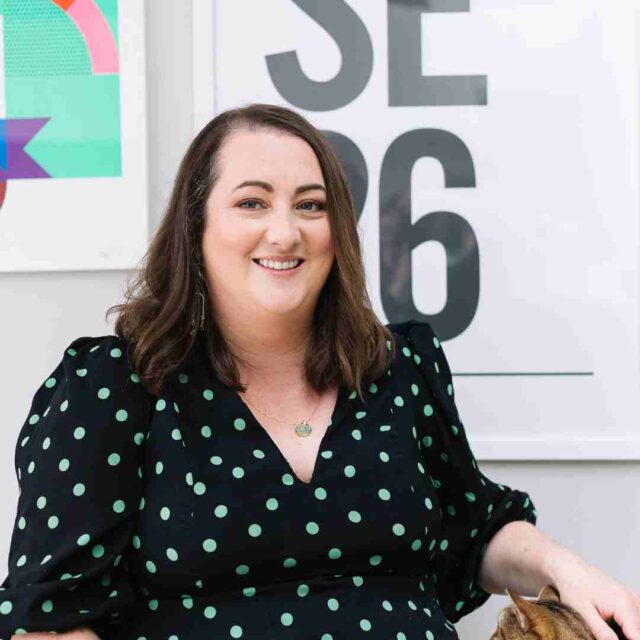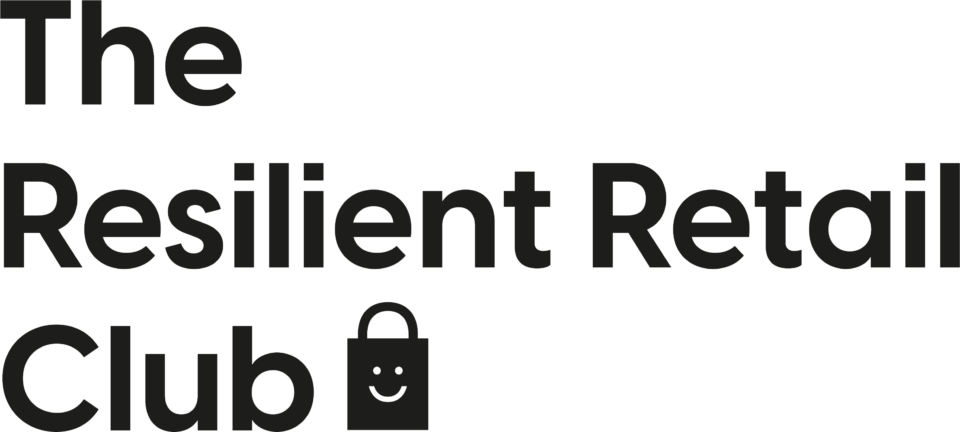Practical Solutions to Avoid Stock Shortages: Consulting with Driftwood Designs
Catherine Erdly: Before we dive into today’s episode, which is a brand new format for the podcast. Can’t wait to tell you more about that.
I want to remind you that you still have time to get 200 pounds off the stock doctor service, which is a brand new service that I’m launching where you can have your business numbers reviewed for you by a retail professional.
If you go to the link in the show notes, you have the opportunity to book a call. And as long as you have got your call booked in, it doesn’t have to happen before the 21st of October, but it has to be booked in by the 21st of October. Then you will have the opportunity to get 200 pounds off our early bird special, but places are limited. So if you’re interested, then do go and book your call right away.
And today’s episode, as I mentioned, is a brand new format. Hi everyone. I’m Catherine Eardley. I’m the founder of the Resilient Retail Club and also the host of the Resilient Retail Game Plan. And today I’m going to be talking to Becky from Driftwood Designs.
All about an issue that they’ve been having with their stock. And what makes this different is this is going to be a live consulting call. I don’t know what Becky is going to ask me. I’m going into this blind. I’m just going to be talking it through. So I’m going to be hearing for the first time, just as you are, and I’m going to be walking through what the issue is and offering my suggestions.
And if you’re interested in me doing the same for your business, then drop me an email, Catherine at resilient retail club. com. You can share your name and your business name, or if you want to come on, but do it anonymously, then that’s fine too. Otherwise, let’s dive into today’s episode.
Welcome to the Resilient Retail Game Plan, a podcast for anyone wanting to start, grow or scale a profitable creative product business with me, Catherine Eardley. The Resilient Retail Game Plan is a podcast dedicated to one thing, breaking down the concepts and tools that I’ve gathered from 20 years in the retail industry and showing you how you can use them in your business.
This is the real nuts and bolts of running a successful product business, broken down in an easy, accessible way. This is not a podcast about learning how to make your business look good. It’s the tools and techniques that will make you and your business feel good. Confidently plan, launch, and manage your products, and feel in control of your sales numbers and cash flow to help you build a resilient retail business.
Meet Becky from Driftwood Designs
Catherine Erdly: Becky, thank you so much for joining me today. Did you want to start us off by telling us a little bit about your business? What you do, what you sell, where you are, everything.
Becky Barratt: Yeah, certainly. Thank you very much for having me, Catherine. I’m, yeah, I’m one half of Driftwood Designs. I tend to look after the business side and Lizzie, a school friend of mine, Lizzie Spikes, she’s the artist. We put our heads together in 2012, when she was selling her work and I asked her about what the possibility of, selling cards and posters and prints, that kind of thing was.
She’d already had a lot of interest in that, but she wanted to do the painting. So we started off at my kitchen table printing off very small batches of things and then have progressed over the last 10 years. And now we’ve got three shops and we sell wholesale to 200 trade customers.
And we also have a direct sales website, which sales sort of steadily have increased and then this year they seem to have gone a little bit crazy. So yeah, it’s an ever expanding business, really.
Catherine Erdly: Fantastic. And so is that still your main product? So prints, cards, paper goods?
Becky Barratt: We started with paper goods because we could order them in smaller quantities, but we always dreamed in the early days of doing soft furnishings, decorations, all that kind of thing. And all of that now has come into fruition. We do everything from lampshades, cushions, oven gloves, also wooden decorations, canvas prints anything, anything we can get manufactured in the UK at a price that we can still use for wholesale then we go for it.
Catherine Erdly: Excellent. So the entire range is sold both website, three shops and also wholesale. So is everything sold in all channels, if that makes sense.
Becky Barratt: Not everything, some things we just can’t get. Like China printing, we just can’t get it at a price we can compete with. And so we sell it at a 20 percent reduced price to wholesale. We normally try so that they can have a 2. 5 mark up. But few products, soaps again, with them being UK made, we just can’t get them at a price that we want them to be be resold at.
Becky’s Stock Question: How do I move from being reactive to being proactive about my stock?
Catherine Erdly: Yeah. Yeah, for sure. So you came on the podcast today with a stock question. So do you want to walk me through what your question is about your stock?
Becky Barratt: It’s an odd one. Online, we’ve got over 2,100 products. So that’s the cards collection, the poster collection, and then the A4 posters can be framed, the cards can be framed. There’s lots of different variations, but we’ve got 12 different main stock and then little subsidiary, but 12 main manufacturers that we use and we tend to react to things being out of stock rather than being a step ahead of it.
So my question is, how much time do you think it would take to make the step from being one step behind to one step in front?
Catherine Erdly: Okay. So if I’ve understood this correctly, so you’ve got 2,100 products on the website. When something sells out you’re replenishing it, but you feel like you’re not being notified of when it’s about to run out. Is that it?
Becky Barratt: It’s just a case of the humans packing the orders, we’re all keeping an eye, but then sometimes if a box downstairs is labeled wrong. And it’s, for example, it’s happened recently with our most popular tea towel that we had a box downstairs that was labeled 150 Calon tea towels.
And when we opened it up, it had Calon cushion covers in it. So we were then had to phone the manufacturer, they said four weeks, it’s looking like it’s going to be eight weeks and it’s our most popular tea towel. So we’re spending a lot of time without it in stock.
Catherine Erdly: So it’s moving then from being reactive to being proactive and knowing this is about to run out. What system are you using?
Becky Barratt: On?
Catherine Erdly: for the website? What’s
Becky Barratt: WordPress.
Catherine Erdly: Okay. And is all of your stock listed? So for example, can you run a report and see that what your stock levels are per line?
Becky Barratt: No. No, because our tills are we sell a single greetings card, which covers 350 designs, so it’s not every product isn’t on the till. It’s one greetings card, one poster, one frame. So that’s always been the sticking point for me is the amount of work it will take to get every individual item onto the till. Our main product is cards and people buy eight or 12, the time it would take to find each individual card, that’s not adding to the customer’s experience very well.
Yeah. It’s trying to just, it’s just the weighing scales of balancing it all out, really. Yeah.
Catherine Erdly: Yes! Completely! There’s a couple of different ways of looking at this because I’m always a big believer with the stock management piece of it that you have to be, what’s the word, you have to be pragmatic about it. There’s different ways of doing it.
So for example, if you wanted, We can talk about the furthest you could go with it, and then we can talk about what the work around might be.
Option #1: Re-platform – this is the most complex but might offer the best long-term solution
Catherine Erdly: So for example, I would say that if you want to really get a handle on what’s selling and to be able to go through and track your sales and to be able to say I’ve got this much left in stock and this is how long till it runs out.
On the one hand, there are lots of systems that can do that. So for example, a lot of people I work with who’ve got bricks and mortar store, they’ll use Shopify. So Shopify, Shopify website, Shopify store, and you can do all of that very easily. And what they might do, for example, I suppose with cards, you could actually barcode to the back, for example, and then you can create your own barcodes in Shopify and then scan those at the till so that you’re not having the customer wait forever.
Because I do definitely get that, that whenever you have to look up an item individually, it’s not ideal for the customer. And also to be honest, you get a lot of errors. A lot of people who have manual lookup on their tills, they find they have a lot of stock errors. So that is one way that you could do it.
If you did it that way, then you would basically be able to see I’ve got this amount of stock and I’ve got these sales by line. And then you can get apps in Shopify as well. There’s one called stocky for example, that would even let you set Parameters to say right, well, actually the stocks dropped below this, or be able to tell you things like there’s a analytics called GLEW, and they let you see run rates and things like that, which basically says, based on how you’re selling right now, you’ve got 10 weeks until this runs out, or it’ll say 10 days until it runs out. And so from that perspective, you can set up all of those kinds of alerts. But that said, that is, that’s like a big project. It would be a multi month project because anytime you’re talking about re platforming, it’s extremely complex, so that is the sort of the ultimate solution.
And then once you’ve got that, then you’re able to set up alerts so that you’re not even having to be the one that’s going through and working it out. However, that is, as I said, something that would require a huge amount of change.
So where is the stock stored?
So are the stores all replenished from a central location, for example?
Becky Barratt: Yeah, our Aberystwyth shop is about a third shop and two thirds workshop.
Catherine Erdly: I see.
Becky Barratt: we retail from the front and then we have a large section in the back that has all the products.
Just going back to your last one, because we’re art products, I couldn’t put barcodes on stuff.
It just takes away. So that’s always been the one, that’s always been a bit, sticking point for us is that just barcodes are so ugly that, And everything we do is, we try to make everything so pretty and then to slap a barcode on it would just feel really awful. So that’s, yeah, I’ve got a slight prejudice towards barcode in that respect.
Catherine Erdly: You’re not alone. I’ll be completely honest. You’re definitely not alone. I have seen people try and do things like try and do artistic ways of surrounding the barcode or even artistic barcodes themselves. The other thing I have seen people do as well is you have, so for example, You would have a reference folder by the front and then somebody would be able to flip through and there’d be thumbnail pictures of everything and the barcode underneath.
So if you did want to have a scanner, you could still scan it, but it wouldn’t be actually on the physical product. And that’s another way of doing it. But you’re not, you’re not the only person to have a problem with barcodes.
So the store has, so it’s one third retail at the front and it’s two thirds of workshop at the back.
Option #2: Kanban Method – More practical and quicker to implement on the stock that matters most
Catherine Erdly: And is that where all of the products sits? So there is there is a method that is known as the Kanban method. So that’s K A N B A N and it’s based off Japanese manufacturing. And what that does is. That’s all about putting cards into stacks of product. So for example, let’s say you’ve got your tea towels, and it would require you to work out roughly how many you sold.
So let’s say you knew that you sold on average 30 tea towels a week, for example, and you knew that it was going to take you, okay, let’s say six weeks. So six weeks to get more in. So you’d need to place an order when you’ve got 180 left. Does that make sense?
Becky Barratt: yeah.
Catherine Erdly: So there is a method of if all of your stocks being replenished from the same place, Then what you do is you put a card, just literally a piece of paper or like a reorder trigger with the details about the product that it is.
And that goes into the stack of tea towels, 180 from the bottom. It might be a little trickier with fabric, but for example, if your cards are in stacks, you could work out where that would go. And that is what people did before replenishment systems with triggers and the rest of it.
And it depends if the stock’s always split and it’s not all in the same place, it’s harder to do it that way. But even if it’s just something like, that you never want to have fewer than 50 tea towels, that’s like your limit. You just don’t want to run out. You could do something similar.
And the idea is that it’s just a piece of paper that says reorder now and the details of the product. And as people are picking products, If they’ve come across one of these pieces of paper, then they would go and put it on the desk or a central point and then whoever’s doing the ordering can actually collect those pieces of paper and then they know, you know that you’ve hit that trigger point.
I don’t know if that seems, that, that works for some people. It depends on the logistics of the business, but I don’t know if that sounds like something that might be feasible.
Becky Barratt: Yeah, that does. I think probably what I would do is identify the products in each range that I don’t want to sell out of and do it, It’s on a narrower category rather than across everything.
Catherine Erdly: Everything.
Becky Barratt: Some things I don’t mind selling out of and then some things I kick myself and I sell out of.
So it’s, yeah, it probably eliminate that, that bit of yeah, those annoying, the thing, the things that people really want.
Which products should be included in a Kanban solution?
Catherine Erdly: Yeah, exactly. And I think I would look at your 80/20 rule. So you probably heard me talk about it before, but 80 percent of your sales will be coming from 20 percent of your range. So knowing what that 20 percent of that range, so that 2,100 there’s probably about 400 items that are taking the majority of your sales. And even within 400 there’s probably actually a, a hundred maybe that are your absolutely mustn’t sell out of those items.
So those are the ones that you would want to do that for because the other things, if you sell out, it’s less of a problem. Or you even say for my top 10. We used to call these N O S never out of stock lines. And when I worked at particularly places like paper chase, that have a lot of what they call continuity products, the product you always had to have, then we would have to report every single week, what percentage in stock we were at. And we didn’t just have it in the shops, but we also had to have backup stock in the warehouse as well to be, and we were judged every week on what our percentage of never out of stock lines were.
So that could be, I definitely think there’s something in that looking at a narrower group of products because with a range that size, I actually would challenge whether or not you need to replenish everything as well. That would be, that was going to be my other question. Do you always replenish everything when it runs out?
Becky Barratt: No, there’s definitely like tipping points when, if a key player goes, then we’ll order straight away and we’ll check everything else from that manufacturer. But there’s definitely things that you can let go out of stock.
For example, at the moment, our advent calendars are selling really well and a number of designs are gone, but I know that we have to order. In the thousands, which it’s not worth us really doing this year. So we’ll probably try and sell out everything this year and then reorder again for next year. So it’s, yeah it’s just playing with numbers really.
And just seeing what else you’ve got, because we’ve got advent calendars, but we’ve also got advent cards. So you don’t feel awful if all the advent calendars go, we have got advent cards that will do the same purpose, even though they’re not exactly the same.
Catherine Erdly: Yeah, for sure. And I always think advent calendars is the perfect example of it’s okay to sell out. Like you say, you have to strike the balance because it’s always frustrating when you feel like you’ve left money on the table. But with something like an advent calendar, you’ve got a really tight time to sell it.
You’ve basically got two, two months now to sell it and anything that you’re left with, you’ll be sitting on until the following year. And, advent calendars are often, I don’t know how bulky yours is, a lot for a lot of people that bulky items is not something you want to have taking up space.
The other thing about selling out is that if you sell out of something, then you are really showing your customer that if they want it, then they have to buy it there and then, and you really do mean that, and I think that’s a really good thing for your customer to, to believe, to know. So I think that definitely would support selling out of some things. And also I’d be in support of not replenishing. I would almost be in support of only replenishing the things that are in your top 80 percent of sales. So that top 20 percent of products you really want to be replenishing your best sellers and anything that’s even mediocre, I would be asking yourself if you can improve it and bring something in that’s better rather than replenishing, it’s sort of jealously guarding your stock so that you’re really only replenishing that top piece. But then at the same time knowing these are the things I absolutely cannot run out of stock of.
And that may change, there may be things that you don’t want to run out of stock of in the fourth quarter versus things that you know you have to have stock of in the summer, making sure those are really clear and whether it’s through putting a card in the stock, or whether it’s through just having a checklist every week where you go through and say, what are my stock levels like on these particular items, I think then that is a good step you can take that is immediate and isn’t going to involve putting in a whole giant system.
That also make your life less stressful.
Becky Barratt: It does sound great. The thing that I wrestle with is you know, we track the sales online and that covers the trade customers. But because we’re based in Wales and a lot of our products are Welsh language, they sell really well in the trade, but the moment we’re trying to expand our business into England and more, American. The Americans have picked up on our more nature and earthy collections, and then the English have picked up on our maps and charts collection.
What to do if you are second-guessing your product choices
Becky Barratt: So they might not be the best sellers, but I want to have them available when new customers come along. So it’s just, trying to work out your priorities and that kind of thing that I sometimes I’m second guessing myself a bit with.
Catherine Erdly: Yes. That’s an interesting one. So these new collections that they’ve picked up on, is it just new customers that picked up on existing collection?
Becky Barratt: It’s new customers. We have quite a lot of customers comes to us from faire, for example, the wholesaler. And they’re usually not in Wales because most of Wales we’ve got a stockist in most towns, luckily. So they’ll look at our collection and now they’re curating their own collection from it. But this, but obviously it’s the same sort of thing because even though we’ve had it for 10 years to someone else, it’s brand new. So it’s trying to always not put your own prejudices onto products.
Catherine Erdly: Yeah, but also I think, have a look at recent sales data. If you look at it over the 12 months, it’s not a bestseller, but in the last three months for your wholesale channel, then it is a bestseller. Then that’s a reason to keep that in stock as well. Do you see what I mean? So you’re going to have different bestsellers per channel and it is worth having a look and seeing, okay. What are my fair best sellers? What are my website best sellers? What are my director wholesale stockies best sellers? What are my shop best sellers? And they will be different. And working out. Obviously, it depends where the biggest chunk of your money is coming from, but making sure the best sellers for the biggest channels are definitely covered, but equally so that you don’t discount an item that isn’t a bestseller in the shop.
Because it is a bestseller on fair, you can look at it that way. You can also say, I want to have this whole collection available at all times, because I know that if the stock is comes to me and they can only get part of it, they can’t build a whole range out of it. Then it’s none of it’s going to sell.
Then that’s fine. Then all of that needs to stay in stock. And as you said, you may end up with a couple of hundred lines that you want to always keep in stock, but it’s still a subset of that. 2100. So it’s still more manageable.
Becky Barratt: no, that’s great. That’s yeah, no, it’s good. Good food for thought.
What actions will Becky take based on the conversation?
Catherine Erdly: So based on what we talked about today, what’s one thing you’re going to do based on today’s conversation?
Becky Barratt: Definitely I’m going to identify the best sellers. I love the putting the paper in. I think, if we can do that with, maybe even just 20 of the cards, if we pick the top ones and then the tea towels, the things that, often on the back foot with, I think that will be really useful.
Catherine Erdly: Yeah. Wonderful. And to be honest, The example that you gave there about how the tea towels turned out to be cushion covers. That is also just a really unfortunate incident, right? That’s just, unless the supplier has a history of mislabeling things, in which case that’s a whole different conversation.
But if it’s just literally one box where you thought you had them and then you didn’t. I mean You could have something in place that said for my top 10 bestsellers we have to check every box when they arrive, if it’s that vital that you mustn’t go out of stock.
You could do like a hundred percent check on everything that arrives, otherwise it’s just, sometimes you can plan and aim to work around the majority of issues, but there will always be things like that come up.
Becky Barratt: Yeah, there always is. And I remember last year, I double ordered cushion covers and then we did a marketing push on them and did an offer on them and we shifted them really quickly. So was something I’d picked up from one of your podcasts, trying to turn things into a positive and give people a little bit of something. And it did generate other sales and it’s generated people for the mailing list. So yeah, it all worked out well in the end.
Catherine Erdly: Oh, fantastic. Thank you so much for coming and sharing. That was really helpful. And I hope that you found that useful food for thought.
Becky Barratt: Thank you.
Catherine Erdly: Thank you so much for tuning in today.
It’s so great to have you with us. If you have a moment to rate and review the podcast, it makes a huge difference. And why not share it with a friend who would find it useful as well? It’s so important to help get the word out. And of course, if you like, subscribe or followed the podcast, then you’ll be the first to know about each new episode, which lands in your inbox every week at 6am on a Thursday.
See you next week.







